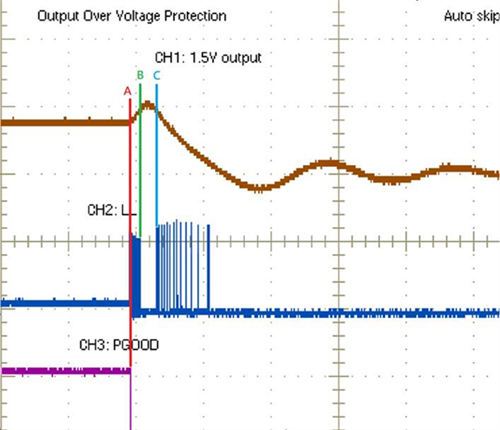Dear team
The customer would like to confirm the OVP function.
On Forced CCM mode, what is the action of the internal switching MOSFET when VFB>0.6*120%?
(1) The high side MOSFET is turned off, and the low side MOSFET is fully turned on?
(2) The high side MOSFET is turned off, and the low side MOSFET is turned on for the minimum duty cycle?
(3) Both high side MOSFET and low side MOSFET are turned off? The above troubles you to take the time to reply, thank you
Could you help to recommend.
Many thanks
Denny



